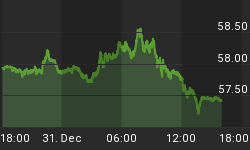Out on the fringes of monetary policy, a merger of sorts is taking place between the debt jubilee and Modern Monetary Theory (MMT). The result -- likely to emerge sometime in 2016 -- will make the past decade's bank bailouts and QE programs look like kid stuff.
Let's start by defining these terms:
The debt jubilee -- an idea from biblical times in which debts are periodically forgiven -- involves the government creating a lot of new currency and giving it to debtors, either through stepped-up public spending, tax cuts, or some sort of direct transfer. A more recent term for this is "helicopter money," which reflects a central bank's ability to simply drop newly-printed bills out of an aircraft if necessary.
Modern Monetary Theory asserts that in today's world there's no reason for governments to borrow money and levy taxes. Armed as they are with fiat currencies and unlimited printing presses, they can just fund themselves directly, without having to tax their citizens or issue bonds.
The synthesis of these two concepts calls for government to eliminate the current debt overhang through some form of jubilee, i.e., by creating a bunch of money and giving it away with the proviso that the recipients use the windfall to pay off debt. Borrowers get out from under, creditors get paid in full, and a new monetary age begins with a relatively-clean slate. Then the government abolishes taxes and starts self-funding via the printing press, creating as much money as it needs to do what has to be done.
Australian economist Steven Keen is one of the highest-profile proponents of this idea. Here he is on a recent Max Keiser:
This is obviously a big change, but because it promises to solve so many problems so painlessly it's attractive in a world where leverage has run amok and the number of governable countries is shrinking fast.
The first tentative step towards a jubilee/MMT fusion is now being debated in Finland:
Finland considers giving every citizen 800 euros a month
Finland is taking a new approach to lift its economy as it faces record-high unemployment. The nation is moving toward offering its citizens a tax-free payout of 800 euros, equivalent to $868 USD per month, in place of current social welfare payments, child benefits, and state pensions.The proposal that's being designed by the Finnish Social Insurance Institution would benefit all citizens, regardless of whether or not they receive any other income. A final proposal will not be presented until November 2016, Quartz reports. If it's approved, Finland would become the first to implement universal basic income. Giving every Finn 800 euros per month comes with a pretty hefty price tag. Based on the country's population of 5.5 million, it will cost a total of 52.8 billion euros a year.
So far, the plan seems to be gaining support. A survey commissioned by KELA shows that 69 percent of the Finnish population is in favor.
Finland's economy has struggled to find ways to dig itself out of recession since 2012. Prime Minister Juha Sipilä told the BBC, "For me, a basic income means simplifying the social security system."
Finland is not the only country that is debating basic income programs. Switzerland will hold a referendum on a proposal to pay each citizen about 2,500 Swiss francs a month next year, while the Netherlands plans to begin universal income pilot projects in several cities next year.
For readers who view this as a good idea, please go back to the first part of this post, note the phrase "... creating as much money as it needs to do what has to be done ..." and consider the implications.
Even if the new monetary system begins with limits on, say, spending as a portion of GDP, the fact that government is the entity that measures both spending and GDP makes nominal limits a sad joke. To get higher spending in such a regime a government only has to tweak the black box that spits out, for instance, the inflation measure used to turn nominal GDP into to real GDP. Or it can fiddle with the imputed rent that homeowners could get if they made their homes available, or any of a dozen other subjective measures of growth and spending.
And the limits themselves, unless written into a revised constitution, would be subject to congressional vote and so will rise whenever the next emergency is engineered. There is, in short, no possible way to keep a self-funding government from growing like crazy, providing every possible perk for major constituents and trying to impose its will on its neighbors. We'll have put a monster in a cage, not realizing that it can open the door whenever it wants.
Said another way, if giving governments fiat currency printing presses caused a bit of trouble in a system with bond markets and debt ceilings, imagine what giving them the power to spend as much as they deem necessary without reference to any external limit would do.
Actually don't bother imagining. Just wait a few years to find out.
















